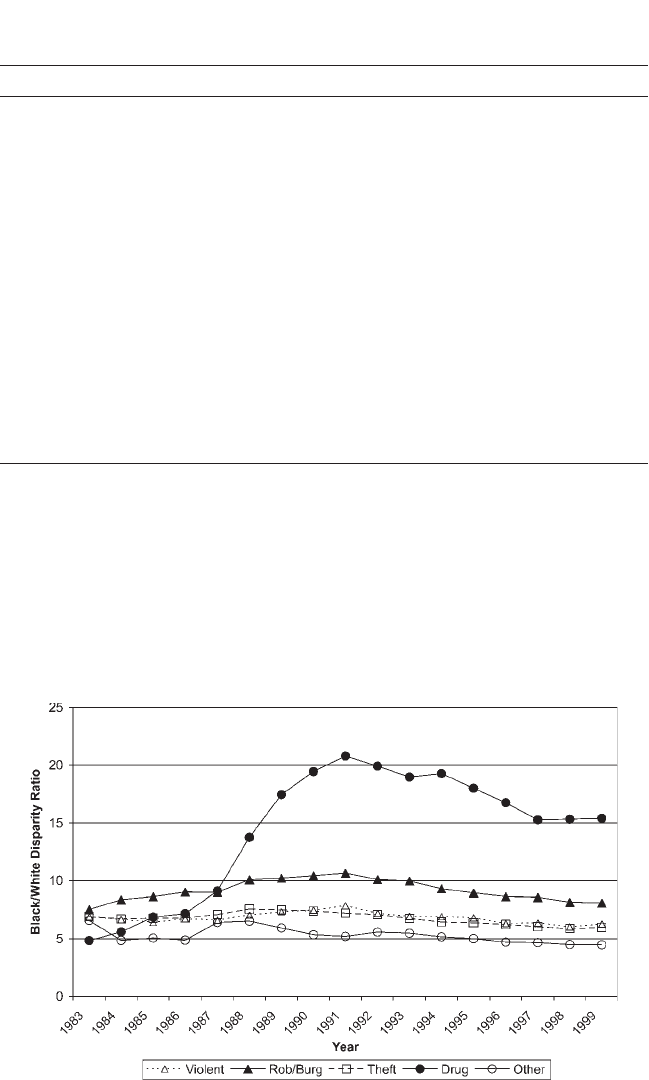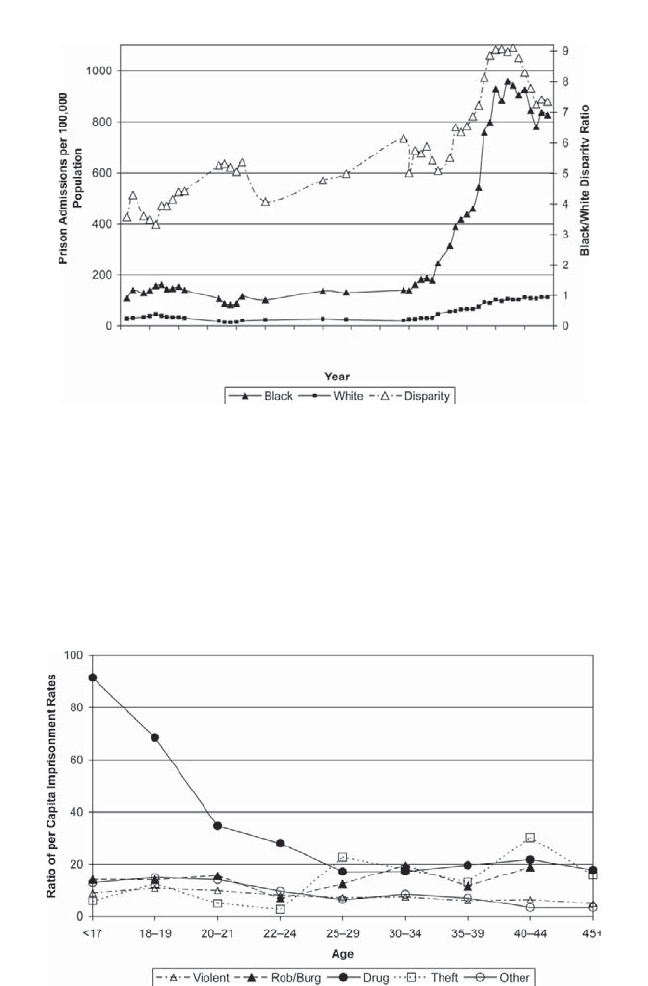Jeffries Vincent (Editor). Handbook Of Public Sociology
Подождите немного. Документ загружается.


282 Chapter 16
and public sociology develops reflexive knowledge for non-academic
audiences. Burawoy acknowledges that the typology is more useful as a
stimulus to reflection and discussion than as a rigid classification of types
of work. In practice, sociologists often simultaneously engage two or more
of the cells in Burawoy’s typology, and many of the important debates
and distinctions about the relation of sociology to external groups are not
encompassed in the typology.
I began my career as a public sociologist somewhat haphazardly in 1999,
before hearing Burawoy’s presentation on his typology. In taking this op-
portunity to reflect on my work in light of it, I find that the typology pro-
vides a useful basis for organizing reflections on my work; at the same time
it elides many of the important lessons I feel I have learned in the process
of doing public sociology. I organize my essay as follows. First, I tell the
story of how I got involved in this issue, where the important lesson is the
way that one’s commitments as a person and as a sociologist are complex
and cross-cutting in ways that cannot be captured by a distinction between
critical and professional sociology. Then I discuss the links between doing
professional and public sociology, calling attention to the often-neglected
professional skills that are important in communicating with the public.
Third I dig into the matter of the publics, where I stress the diversity of
publics and the need to listen as well as talk. Fourth, I talk about the links
between public and policy sociology as one gets involved with groups that
are trying to address social problems. Here the important issues are the ten-
sions arising from the different rhythms of professional and policy work,
as well as from the much greater difficulty of solving problems relative to
acting as social critic. In the conclusion I try to draw the lessons together
and reflect on the question of the social impact of my work.
GETTING INVOLVED: THE CRITICAL
INTERVENES IN THE PROFESSIONAL
Burawoy’s typology is focused on types of sociology. But sociologists are,
of course, whole people, and we come to our concern about social issues as
people not just as sociologists. Audiences often like to know how an ivory
tower academic came to this issue. I do have some history of low-level ac-
tivism that I had pretty much put on hold while rearing my children. My
interest in activism drew me into studying it academically as a scholar of
social movements and collective action, but my past activism was unrelated
to sociology.
I was pulled into prison work by the organizing efforts of local commu-
nity activists, not by sociology. In 1999, a local advocacy group advertised
a conference entitled “Money, Education, and Prisons,” raising concerns
282 Chapter 16

Talking about Racial Disparities in Imprisonment 283
that money was being diverted from education into prisons and stressing
that this was a double disadvantage for African Americans, who were both
being incarcerated at high rates and suffering from cuts in education. I at-
tended this conference, thinking it would be helpful for my teaching. The
local group had done an impressive job in organizing. The conference had
over 400 in attendance and a dozen impressive speakers. I saw some of
the claims in the conference materials and wondered if they were generally
true, and what the situation was in Wisconsin. In particular, I doubted that
the statement that “one in three Black men is under the control of the cor-
rectional system” could possibly be true. I thought I would want to check
that fact out before using it in lecture. It turned out to be true. The most
recent estimate from the Bureau of Justice Statistics is 40 percent!
I was looking for more involvement in social action now that my children
were older. I had attended programs on social issues sponsored by Madison
Urban Ministry (MUM), a progressive group whose motto is “planting the
seeds of social change.” Some people from MUM had been part of the Money,
Education, and Prisons conference planning group, and MUM decided to put
on a series of forums about prison issues. I volunteered to be on the planning
team for that forum series. As part of that, I volunteered to acquire and present
information on patterns of imprisonment. I argued that people would want to
know what people were in prison for and other information about the patterns
of imprisonment. Although this did not necessarily seem the most important
thing to everyone else, they thought it would be an appropriate component
of the forums. Thus I began as a person, a volunteer among volunteers. I of-
fered my sociological skills the way other people offered to do publicity or to
make dinner arrangements. In particular, I am not a criminologist and when I
started I had very little professional sociology to offer people.
Because I am not a criminologist, my first efforts were hit and miss.
I eventually found information, first summary statistics on government
websites, and then individual-level data from the National Corrections
Reporting Program. At that time, it was easy to find the total imprisonment
rate for each state and the national imprisonment rates by race, but not the
race-specific imprisonment rates for different states. Because it is primarily
black people who are being incarcerated, the strongest predictor of a state’s
total incarceration rate is the proportion of the population who are black.
The first statistic I calculated, by dividing numbers imprisoned from Bureau
of Justice Statistics websites by population figures from Census Bureau
websites, showed that my state, Wisconsin, was much more disparate in its
imprisonment patterns than was the nation as a whole. In fact, Wisconsin’s
black/white disparity was 20 to 1, compared to about 7 to 1 nationally. This
shocked me. I prepared a handout with this and other information for a
presentation at the forum. It had tables with numbers. Some people noticed
and expressed concern, but many ignored it. I tried to give my handout to

284 Chapter 16
people at a couple of other forums on prison issues, but there did not seem
to be a lot of interest. In the second year of the forum series, the issue was
juvenile justice, and I did another handout and presentation for that group,
with a similar weak response. I continued working on the data analysis for
this project for several years before it received much public attention.
Initially, I got much more attention and support from social scientists
than from activists as I attempted to develop this as a professional sociol-
ogy project comparing different states’ incarceration rates and looking for
the causes and consequences of these differences. Wisconsin’s Institute for
Research on Poverty provided me with a research assistant for several years,
and the National Science Foundation provided a small development grant.
We used this funding to download and process National Corrections Re-
porting Program (NCRP) and arrest data; we spent a lot of time grouping
and categorizing offenses to match arrest and imprisonment offenses so
we could compare them. My larger more grandiose grant applications were
rejected by several agencies because they were naive and ill-focused.
My work is not critical sociology. However, the fact that I entered the
field with questions coming from a critical standpoint did lead me to ask
different questions from mainstream criminology. I was not interested in
testing different theories of social control or in explaining away racial dis-
parities by showing they were correlated with other factors such as crime.
Instead, I started from the presumption that high black imprisonment rates
are bad and cause problems. But to know what to do about the problem,
I wanted to know whether the problem was that blacks were committing a
lot of crimes, or that blacks were being discriminated against in the system.
I tried to bring my professional skills to bear on answering that question.
The data that became the core of my public work in Wisconsin fell in my
lap in 2000. Someone had given a copy of my 1999 forum handout to Gwen
Moore, an African American state senator from Milwaukee. She had made a
short angry speech on the Senate floor that week about locking up all the black
people, but nothing more was said about it. Senator Moore had filed an open
records petition with the Wisconsin Department of Corrections about the race
and offenses of prisoners sent out of state and the DOC responded with six
floppy disks and a paper code book. Her staffer called to ask if I could help
them process it to answer their question. An experienced graduate student,
James Yocom, volunteered his time to do the work of keying in hundreds of
lines of variable definitions and creating the dataset, which included everyone
who had been in prison in Wisconsin in the years 1990–1999. We built on
the work we had done with the NCRP in grouping and coding offenses, and
were able to do a detailed analysis of patterns in Wisconsin by race, offense,
county, and admission type. Nobody had done this analysis. The information
was powerful, and presenting it had an impact. It told people things they did
not know and forced people to confront the problem.

Talking about Racial Disparities in Imprisonment 285
In sum, I did not start out to be a public sociologist nor a critical sociolo-
gist. Rather, my critical sensibilities as a politically aware person interacted
with my professional sociological sensibilities so that when fortuitous
events created an occasion that seemed to call for my abilities, I stepped in
and tried to figure out what to do as I went along. The fact that I already
had tenure at a major research university made it possible for me to do this
work. It gave me substantial resources for the work and it gave me the job
security to permit risk-taking and the diversion of efforts into an ill-defined
path with no clear professional payoff.
PROFESSIONAL SKILLS FOR PUBLIC PURPOSE
Often, public sociology involves taking professional sociological research
that already exists and moving it into the public forum. I knew little about
prisons and crime when I first became involved in this work. Nevertheless,
my training and orientation as a professional sociologist made me able to
do work that non-sociologists could not do, while learning how to do the
work for a public purpose has fed back into my professional skills.
Quantitative Analysis
At the time I began the project, it was difficult to find information com-
paring states in their racial patterns of incarceration. Today you can find
websites maintained by NGOs that publish such rankings annually. It was
being ranked #1 in black incarceration for 2004 and a resulting ranking as
“the worst place to be black in America“ by an online black magazine that
finally got the attention of Wisconsin’s white politicians. More and more
advocacy groups are employing social scientists to analyze data and publish
scorecards as part of their social change strategies.
Many groups have asked me to help them analyze and summarize data
for grant proposals and reports. I also undertook several substantial analy-
ses of juvenile data for the juvenile justice advisory committee. There is a
crying need for data and data analysis in a wide variety of non-profit and
governmental agencies. Cutbacks in the public sector have led to substan-
tial reductions in administrative staff, including data analysts. As a result,
although there is a huge amount of information collected by public agen-
cies that could be used to monitor them and hold them accountable, there
is a profound shortage of analyzed information. In the racial disparities
area, there is a need to collect accountability measures at every decision
point. Police agencies that undertake to record the race of all drivers in
traffic stops and find evidence of disproportion can then ask what steps to
take to address the patterns. My analysis of juvenile arrests pointed to the

286 Chapter 16
importance of missed court dates, assault charges, and arrests at schools
as key sources of disparity, which led the DMC committee to develop
programs to address these issues. Madison school analysts found that the
subjective interactional charge of “insubordination” accounted for much
of the disparity in school suspensions, leading the district to change its
suspension policies. Many agencies are protective of their data and keep
their reports internal and private, unless forced to disclose by very specific
open records petitions. But even when there is willingness, even eagerness,
to use data to address social concerns, there is a deep inability to do so in
many public agencies. One role universities could play that would be of
immense social benefit would be to create structures to facilitate the analy-
sis of public data for public use.
Data analysis is part skill and part art. The ability to gather, process,
and analyze quantitative data is a special skill that social scientists bring
to public discourse. It takes a great deal of talent, skill, insight, and persis-
tence to make data reveal important social patterns and to check for arti-
facts or omitted variables that might be influencing the results. It is what
we can do that others cannot. While propagandists or journalists might
grab any figure that fits a point they are trying to make, as sociologists we
want to be sure that the results we are reporting are as correct as we can
make them.
Presenting Information
If we are going to engage public discourse, the public has to be able to
understand what we say. The turning point in my public presentations was
the shift to graphical displays of information. A major stumbling block
for presenting sociological information to public officials and the general
public is the general lack of statistical literacy. Many people’s eyes simply
glaze over when they see a table of numbers. Even for those of us who are
comfortable reading tables of numbers, a graphical display can convey
information that can be much more readily absorbed. Information visu-
ally displayed can “tell a story” in a way that numbers or words cannot.
Consider, for example table 16.1 and figure 16.1. Both contain exactly the
same information. But figure 16.1 tells the story quickly and visually in
a way that table 16.1 cannot: the black/white disparity for drug offenses
was initially lower than for other offenses and rose steeply in the 1980s
and remained high in the 1990s, while that for other offenses was much
lower and more stable. Figure 16.2 conveys the trends in prison admis-
sions 1926–1999. Again, the graph is much more powerful than a verbal
description of what it shows: black and white admissions were relatively
stable until the mid-1970s, when admissions accelerated for both races but
especially for blacks, so that the disparity rose substantially. Figure 16.3 is
the one of the most shocking slides in my talk. It shows that drug sentences

Talking about Racial Disparities in Imprisonment 287
for young people are the major source of racial disparity. This slide is linked
with other slides showing that young whites use illegal drugs at higher rates
than blacks and showing employment discrimination against young black
men with prison records for drug sentences. Together they provide a power-
ful indictment of the system.
Table 16.1. Black/White Disparity in Prison Admissions, by Offense (Source: NCRP)
Year Violent Rob/Burg Theft Drug Other
1983 6.9 7.5 6.9 4.8 6.6
1984 6.7 8.4 6.7 5.6 4.9
1985 6.4 8.6 6.8 6.9 5.1
1986 6.7 9.0 6.8 7.2 4.9
1987 6.6 9.0 7.1 9.1 6.4
1988 7.1 10.1 7.6 13.8 6.5
1989 7.4 10.2 7.5 17.5 5.9
1990 7.5 10.4 7.4 19.5 5.4
1991 7.9 10.7 7.2 20.8 5.2
1992 7.2 10.1 7.1 19.9 5.6
1993 6.9 10.0 6.8 19.0 5.5
1994 6.9 9.3 6.4 19.3 5.2
1995 6.8 9.0 6.4 18.0 5.0
1996 6.3 8.7 6.2 16.8 4.7
1997 6.4 8.6 6.0 15.3 4.7
1998 6.0 8.2 5.9 15.3 4.5
1999 6.3 8.1 6.0 15.4 4.5
Source: NCRP.
Figure 16.1. Black/White Disparity in Prison Admissions, by Offense

288 Chapter 16
It takes skill, effort, and experimentation to prepare a graph so that it can be
read easily. It is an intellectual task, not just clerical, although it has clerical ele-
ments. You both decide what information to present and then work to format it
so that important distinctions can be visually absorbed. Different formats are best
for different media. Dark backgrounds and color work best for computer slide
shows, and textual elements need to be large. But color graphs are incomprehen-
sible if printed out and photocopied in black
and white. White backgrounds,
Figure 16.2. Black/White Prison Admissions in the United States, 1926–1999
Figure 16.3. Black/White Disparity Ratios in Prison Sentences by Age and Offense
Group, Wisconsin Total (Inmates with no prior felony or prison admission only)

Talking about Racial Disparities in Imprisonment 289
uncluttered displays and monochromatic patterns and markers are best
for paper. Another pitfall for paper graphics is that photocopy machines
lack the definition of printers, thus blurring distinctions that are legible
in the original. Within a graph, it can be difficult to keep all important
elements legible. Getting the formatting right for each particular graph so
that it can be read has been difficult and time-consuming at times. Many
of my slides have an amateurish and inconsistent look. Nevertheless, I
could not convey half as much information without them.
Another important aspect of my work has been extensive use of the
Internet. I set up and maintain my own website at the university. This has
allowed me to “publish” reports and statistics quickly and to make them
widely available at little cost. I have posted raw data on the Internet, and
spreadsheets with data and graphs showing time trends in imprisonment
by race and offense for the different states in the United States and the dif-
ferent counties in Wisconsin. I have also posted copies of my PowerPoint
slide shows and PDF files with screen shots from the shows. The Power-
Point slides have been downloaded and incorporated into lectures all over
the country, and the PDF files have been printed out, copied, and circulated
widely. Early on, I generated an online slide show tutorial on these issues.
It rapidly became out of date and I did not update it, but this is another
medium to explore.
Finally, good public sociology requires the core skills of good writing and
good public speaking: the same skills we need when we teach. We need
to go to the trouble to understand and address audience background and
preconceptions, to figure out how to explain complex ideas clearly so other
people can understand them, and to make our writing or speaking lively and
interesting without resorting to simple-minded slogans and sound bites.
ENGAGING PUBLICS: EXPERTISE, LEGITIMACY,
LISTENING, DIFFERENCE
Over the years, I’ve spoken to an accelerating number of groups. As this is
my advocacy work, I usually say yes to any group who asks. I have spoken
to church groups, antiracism groups, community forums on race and jus-
tice, the school board, court commissioners, public defenders, interagency
criminal justice task forces, and a large number of classes. I’ve talked to
criminal justice professionals, elected officials, relatively apolitical middle-
aged white churchgoers, and black community activists. I have listened
as well as talked, and in the process, I have learned a great deal from the
audiences.

290 Chapter 16
It is important to think in a practical sociological way about the problem
of locating oneself in a public space and communicating with others. It is
very important to attempt to understand the preconceptions and concerns
of the audience. You cannot influence people by insulting or attacking them.
People need to believe that what you tell them is true and that you are not
distorting the evidence to make a point. It is important to speak with author-
ity and expertise where the evidence warrants and with humility and caution
where the evidence is silent or ambiguous. At the same time, you do not
want to bore people to death with a pompous lecture. You need to speak
with passion and make the material lively and accessible. These are also
politically contested and sensitive issues, and you have to consider where
you locate yourself in relation to political parties and the other political ac-
tors in the field. Publicly, I avoid personalizing issues, attacking officials, or
picking sides in partisan disputes. Instead, I argue that we as a public are all
responsible for the political climate that created this problem and everyone
needs to take responsibility for his or her part of the problem.
What makes this difficult is that there are different publics and different
audiences with different preconceptions and different concerns about the
implications of the information. Language and rhetoric that makes the pre-
sentation more acceptable and legitimate for one audience can be inflam-
matory or alienating to another. With conservative white groups or public
officials, I try to be neutral and factual. Many white officials’ first response is
defensiveness. Many public employees are worried that evidence of dispar-
ity is tantamount to an accusation of illegal discrimination that may cost
them their jobs, or at least embarrass them. In dealing with this concern,
I have found that it is very important to remind people that a “disparity”
is a statistical pattern. I stress that I am presenting the patterns in the data,
and that what responsible people must do is try to understand how to re-
spond to these patterns without denial, but that honest people can disagree
about solutions. I stress that discriminatory patterns can happen without
discriminatory intent.
But other audiences are alienated by precisely this stance. Left-wing and
black audiences often criticize me for not calling the patterns “racist.” To
them I say, “of course this is racist.” But then I often give a short exegesis
on “the R-word.” I have learned (I tell them) that most whites respond very
defensively and even angrily to being called racist, or to having something
they are involved with called racist. Most whites (and many blacks) inter-
pret racism as an individual attitude of racial prejudice, hostility, and big-
otry toward others. If they are liberals, they view prejudice as an individual
failing as a human being. Thus, to call them racist is to accuse them of being
defective as a human being. Nevertheless, for the left-wing and black audi-
ences, my credibility and legitimacy depends upon shifting rhetoric, and
being willing and able to use the R-word and address their concerns.

Talking about Racial Disparities in Imprisonment 291
Most of my audiences are what I would call racially naive white liberals,
for whom my presentation is a wake-up call, a shock, a jolt to their com-
placency. It calls attention to a massive problem of racial injustice that they
have been ignoring. But black responses are different. Some black people,
particularly those who work in the system or who are former prisoners,
have praised me for being willing to add a white face to the people talking
about the problem. Many appreciate the information: even though they
know there is a problem, many black people often do not know its full
contours. “They are locking us all up!” is one common response. But the
most common black response is impatience and anger. Much more rapidly
than whites, black people say: “Stop telling us about the problem, we want
to know what to do about it.” Audiences that are half or more black often
become militant and combative. Audience questions are more likely to
bring up CIA control of the drug trade, incarceration as genocide, or chal-
lenge me to explain what I personally am doing to solve the problem. (I tell
them that what I am doing is analyzing data and giving these talks, mostly
to white audiences.)
As I talk to different groups, I try to listen to what they say and use their
comments in talking to other audiences. I explain to challenging black au-
diences about how whites react to the “R-word,” and I tell white audiences
the kinds of issues that black audiences are likely to raise. I explain that all
the professionals agree that racial differences in drug arrests happen because
of where the police concentrate their efforts, but that people disagree about
whether this is fair or not. I tell everyone that there is a debate about proba-
tion and parole revocations. The data show that revocations on “technical
violations” without new offenses are a large share of prison admissions.
Many community people close to offenders claim that the revocations are
often for trivial or trumped-up violations. Some court commissioners have
told me that many probation and parole officers revoke people on trivial
charges, or essentially trick them into waiving their rights. But the district
attorneys and some corrections officials insist that people are revoked only
for serious infractions, and that many have actually committed a new of-
fense at the time of revocation that just has not been processed yet. I do
not have the data to adjudicate these claims. I just repeat them to different
audiences. On this and a wide variety of other specific points, I try to further
communication and open debate across the usual lines by telling one group
what sort of issues are important to another group.
FROM PUBLIC SOCIOLOGY TO POLICY SOCIOLOGY
Burawoy suggests that the difference between public and policy sociology
is whether the agenda is set by the sociologist or some outside group, and
